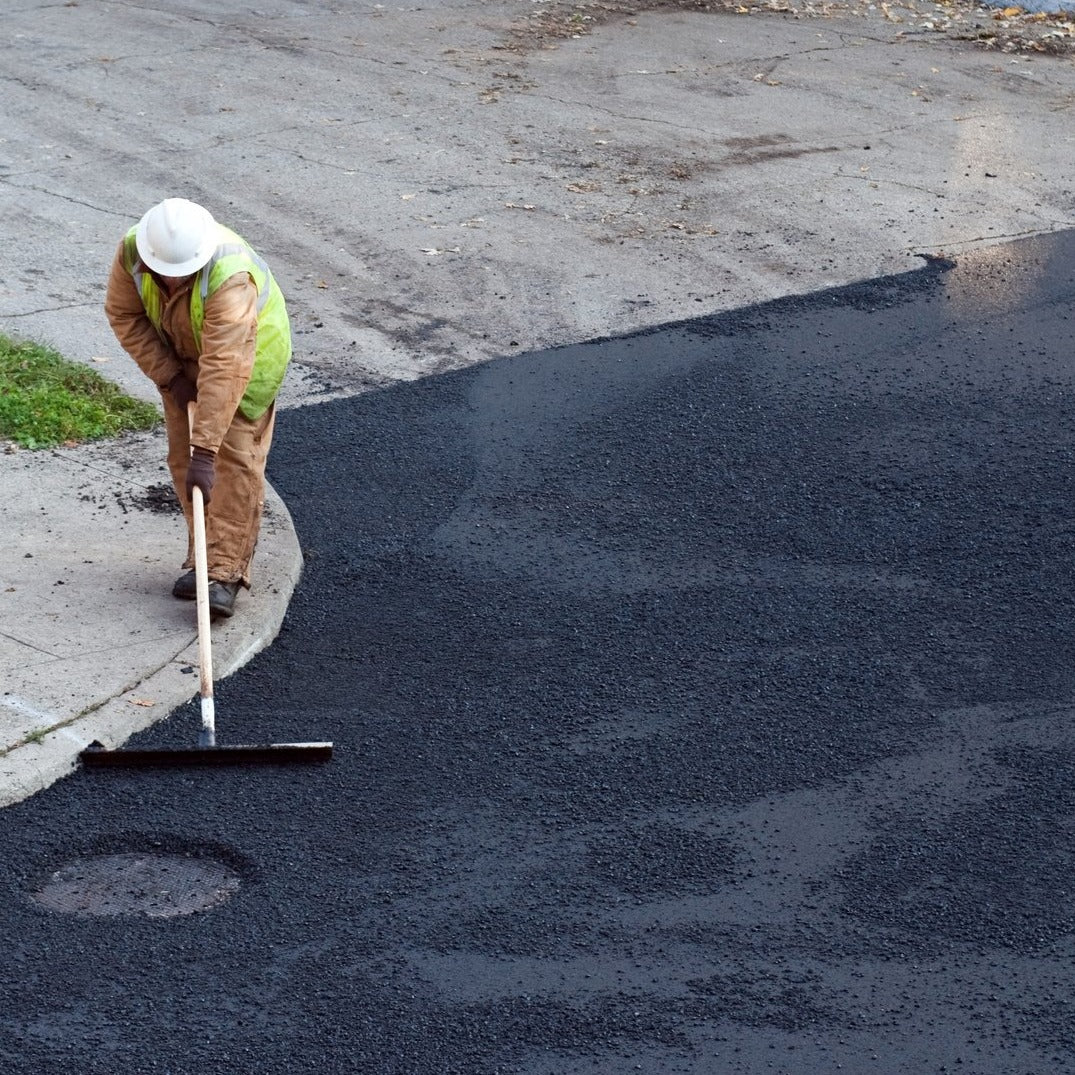Unlocking the Keys of Warm Mix Asphalt Technology
Discovering the depths of warm mix asphalt technology discovers a globe where exact solutions and precise processes assemble to form our roadways and facilities. The combination of fillers, accumulations, and binders isn't merely a building task however a critical orchestration of toughness and performance. As we peer right into the complex dance of components, a tapestry of durability and sustainability unfolds. Yet what exists below this surface of asphaltic proficiency, and what tricks wait to be introduced in the world of leading advancements?
Value of Warm Mix Asphalt
Hot Mix Asphalt plays a vital role in modern-day infrastructure advancement as a result of its toughness and cost-effectiveness. As the most frequently used paving material for roads, freeways, and parking area, Warm Mix Asphalt provides a series of benefits that add to its value in construction jobs. One key benefit is its ability to stand up to hefty traffic tons and harsh weather, providing a resilient and dependable surface area for transport networks. Additionally, Hot Mix Asphalt is economical in both first building and long-lasting upkeep, making it a favored selection for lots of infrastructure jobs.
The durability of Warm Mix Asphalt stems from its structure, which includes accumulations, binder, and filler materials that are thoroughly chosen and mixed to fulfill particular efficiency requirements. Overall, the significance of Warm Mix Asphalt in infrastructure growth can not be understated, as it continues to be a cornerstone of modern-day construction methods.
Components of Asphalt Mixes
The structure of asphalt blends is composed of carefully selected aggregates, binder, and filler products that are important for accomplishing particular performance demands. Aggregates are the main part of asphalt blends, giving strength and security. The binder, normally asphalt or asphalt concrete, holds the accumulations together and provides flexibility and sturdiness to the mix.
The mix and percentage of these parts play a significant duty in determining the top quality and efficiency of the asphalt mix. Designers very carefully create the mix to satisfy certain needs, taking into consideration variables like website traffic quantity, environment problems, and pavement lifespan. Proper option and harmonizing of accumulations, binder, and fillers are essential for creating sturdy, durable asphalt sidewalks.
Mixing and Manufacturing Methods

When the aggregates are chosen, the binder, typically asphalt cement, is contributed to bind the products together. The binder's quality and quantity considerably impact the mix's versatility, resistance, and toughness to environmental factors. Furthermore, fillers like moisturized lime or Rose city concrete may be incorporated to boost particular features of the asphalt mix, such as its workability or wetness resistance.
During manufacturing, the accumulations and binder are heated, usually between 250-325 ° F(121-163 ° C ), to help with mixing and make certain appropriate layer of the aggregates. The blending process has to be detailed to accomplish a homogeneous mixture that advertises the preferred performance attributes of the asphalt. Various techniques, such as set mixing or drum blending, are employed to attain high-grade and constant asphalt blends for building jobs.
Elements Influencing Asphalt Performance
Factors influencing asphalt efficiency encompass an array of variables that influence the sturdiness, long life, and total quality of asphalt sidewalks. One crucial variable is the quality of materials used in the asphalt mix.

Ecological conditions likewise affect asphalt efficiency. Temperature variations, wetness seepage, and traffic tons can all influence the architectural stability of the sidewalk. Design considerations, such as sidewalk density and drainage, are vital in guaranteeing the long-term performance of the asphalt sidewalk. By meticulously considering these designers, aspects and professionals can maximize asphalt efficiency and boost the service life of pavements.
Sustainable Practices in Asphalt Modern Technology

Additionally, the growth of warm-mix asphalt (WMA) modern technologies has acquired grip in current years. WMA enables for the production and positioning of asphalt mixes at reduced temperatures compared to typical hot-mix asphalt, leading to decreased power usage and greenhouse gas emissions. The usage of porous asphalt blends can aid minimize stormwater overflow concerns by enabling water to penetrate through the sidewalk and right into the ground, promoting natural water filtration and charge processes. By applying these sustainable methods, the asphalt industry can add to constructing an extra resistant and environmentally pleasant infrastructure network.
Verdict
Finally, hot mix asphalt technology plays an important function in contemporary facilities advancement because of its durability and cost-effectiveness. By thoroughly balancing components, employing proper blending strategies, and thinking about numerous variables, designers can produce premium asphalt mixes that endure heavy website traffic loads and rough weather. Accepting sustainable techniques, such as using warm-mix modern technologies and recycled products, even more enhances the ecological kindness of asphalt technology.
Blending and production techniques in warm mix asphalt innovation involve the specific combination and handling of accumulations, binder, and fillers to create a sturdy and high-performance asphalt mix.Factors affecting asphalt performance incorporate a variety of variables that impact the longevity, longevity, and overall top quality of asphalt sidewalks. Sustainable methods in asphalt technology include various efforts intended at lowering the environmental influence of asphalt production and paving procedures. By incorporating recovered asphalt sidewalk (RAP) and recycled asphalt roof commercial parking lot paving shingles (RAS) right into new asphalt mixes, the market can substantially minimize the consumption of raw products and energy, while likewise reducing landfill waste.
WMA allows for the production and positioning of asphalt blends at reduced temperatures compared to typical hot-mix asphalt, resulting in lowered power usage and greenhouse gas emissions.